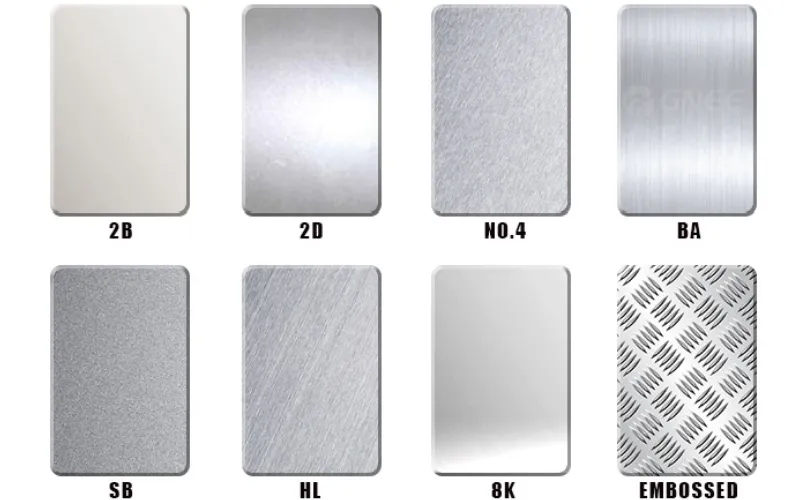What Is Stainless Steel Plate Finish?
By definition, it is the visual appearance of the metal that uses modern physics, chemistry, metallurgy, heat treatment, and other processing methods to change the condition and properties of stainless steel plate, so that it can be optimally combined with the plate material to achieve predetermined performance requirements. These finishes range from dull to bright and include special textures that may be mechanically applied for highly specialized applications.
Already in the preliminary phase, it is possible to define the desired type of finish for the stainless steel sheet and plate.
Benefits Of Surface Finishes For Stainless Steel Plate
Stainless steel plate finishes offer a wide range of benefits. It is possible to:
Serving Dual Purpose: Not only do they bolster the structural integrity of construction projects, but they also serve as exquisite materials for enhancing both the exterior and interior aesthetics.
Enhancing Utilities: Not only do they become shielded from chemical corrosion and physical abrasion, but they are also safeguarded against various factors that can potentially harm the metal.
Improving Appearance: A diverse range of colors and finishes can be incorporated to further elevate the stainless steel plate’s overall aesthetic appeal.
Supporting Cleaning: It allows for significant time and energy savings when it comes to cleaning.
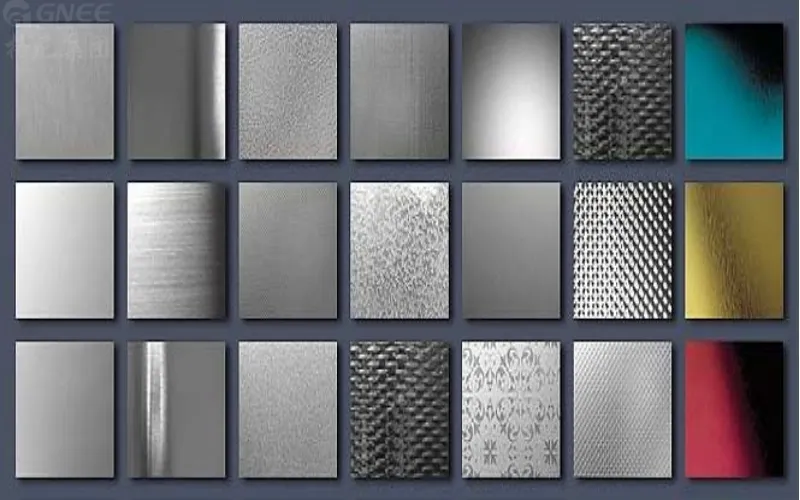
Common Types of Stainless Steel Plate Finishes
Stainless steel plate finishes fall into several main categories: mill finish, brushed finish, polished finish, patterned finish, colored finish, etched finish, sandblasting finish, etc. It’s so important to know what these common finishes are and where they can be used.
1. Mill Finish
Mill Finish is the least expensive finish option. It is unpretentious and requires less time, effort, and expense to achieve.
Whether hot rolled or cold rolled, mill finish is the basic supply condition of all stainless steel sheet and plate products. It offers a matte and dull finish, making this type of stainless steel plate not a perfect option where aesthetic appearance is a priority and where durability remains the most critical factor. They are also universally used for many applications and serve as the starting point for mechanical polishing and other finishing processes.
There are three very popular mill finishes: no.1 finish, no.2b finish, and no.2d finish.
NO.1 Finish
It is hot rolled, annealed, pickled, and passivated. This results in a rough, dull, and non-uniform appearance and does not have a reflective nature.
Therefore, no.1 stainless steel plate is typically used when a smooth and aesthetic finish isn’t important. Common products are air heaters, annealing boxes, boiler baffles, various furnace parts, railroad tracks, I-beams, automotive frames, and gas turbines, to name a few. More importantly, you can polish the no.1 finish stainless steel plates for your work.
NO.2B Finish
It is cold rolled, annealed, and pickled, commonly produced in the same manner as No. 2D, except that the final light cold rolling process is done using polished rolls to achieve a smooth surface with a reflective gloss. Thus, it produces a more reflective finish that resembles a cloudy mirror.
No. 2b is a general-purpose cold-rolled finish, having a clean matte, dull, and smooth finish. And it is more readily polished than the no.1 or no.2d finishes.
It is a good choice where appearance is not important or when further finishing is intended. Typical applications include bakeware, chemical plant equipment, dye house equipment, flatware, laundry and dry cleaning, plumbing fixtures, refrigeration, and sewage treatment. 304 and 316 grade stainless steel plates are often manufactured with a #2B finish. It also serves as a starting point for many of the other polished stainless steel plate finishes.
NO.2D Finish
Like no.2b finish, no.2d finish is cold rolled, annealed, and pickled, however, it does not receive light rolling. Therefore, it forms a dull, silver-gray, matte, and non-reflective appearance.
The 2D finish is most often used in the manufacturing of auto industry exhaust systems, trays, pans, and items used in petro/chemical plants and roofing accessories. It is also preferred as a substrate when a painted finish is desired because it provides excellent paint adherence.
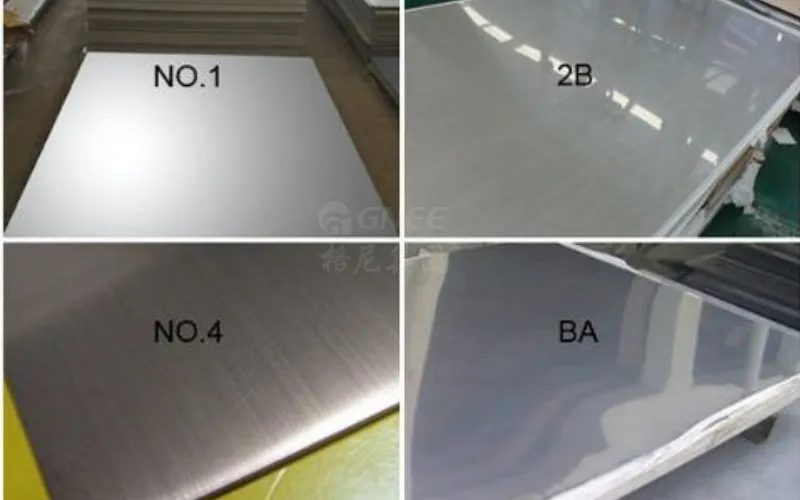
2. Brushed Finish
A brushed finish is more abrasive than a mill finish.
The brushed stainless steel sheets are known for distinct parallel lines on the metal surface, possessing a striking resemblance to a delicate hairline. It is polished with a fine bristle brush on a belt or wheel that moves in the same direction the whole time, then softened with a grease less compound or a medium non-woven abrasive belt or pad. This leaves a dull and matte sheen. Ideally, they have a muted luster and strong decorative appeal. However, due to the grooves in the finish, it is less resistant to corrosion so there is more chance of rust developing, so rustproofing may be needed depending on the application.
The brushed finish is often used for applications that require high appearance priority, including catering equipment, splashbacks, building architecture, jewelry, home appliances, automotive design, storefronts, and interiors.
There are two main types of brushed finishes for stainless steel plates: no.3 and no.4 finishes.
NO.3 Finish
It is a brushed finish achieved by rough grinding with a 120-grit abrasive brush over the surface of the material. This finishing process typically yields a surface finish that is coarse, unidirectional, and moderately reflective.
No. 3 brushed finish is commonly used in food & beverage production services, kitchen equipment, and so on.
NO.4 Finish
This differs from the No. 3 finish with its gradually finer abrasives and a more refined surface. It creates a strong directional grain appearance with a 150-grit abrasive brush. No. 4 brushed stainless steel plate is commonly found in decorative applications, including jewelry, automotive design, food & beverage industry, architectural structures, air conditioners, home appliances, and elevators. It is the favorite finish of architects and is often classified as a sanitary finish.
*Note: No. 3 and No. 4 finishes are often produced by brushing on the no.2B finish substrate.
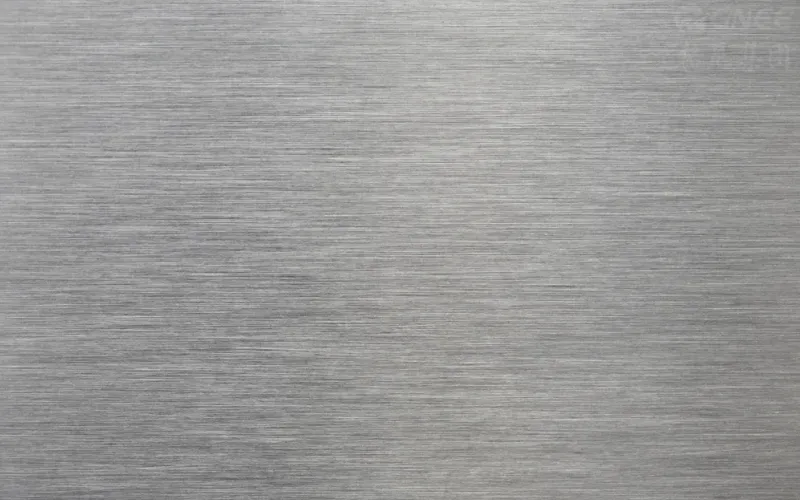
3. Polished Finish
It is also considered more abrasive than mill finish.
A polished finish is often hot rolled, buffed, and polished. Mechanical process is commonly used to polish stainless steel plate, using a series of gradual finer abrasives or a special rolling procedure that stimulates the appearance of mechanical abrasion. Other methods include chemical polishing and electrochemical polishing. This type of stainless steel plate finish is highly reflective and polished, with a mirror-like shine. It is the ideal choice for aesthetic and ornamental applications.
Importantly, partial polishing can be performed on this type of stainless steel plate surface. The polishing levels are generally divided into ordinary 6K, medium 7K, and super 8K finishes.
NO. 6 Finish
A no. 6 finish is created by Tampico brushing a no. 4 finish in an oil and abrasive medium. It has a dull and silver-white finish with relatively short linear polishing lines and is less reflective than a no. 4 finish. This finish was once commonly found on stainless steel architectural components up to the 1980s but is much less used today.
Due to high corrosion resistance, the No. 6 stainless steel surface finish is suitable for marine, architectural, and ornamental applications.
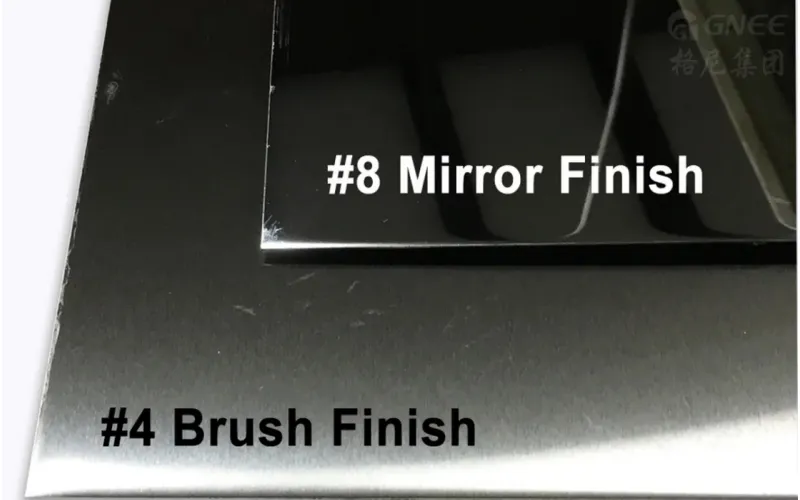
NO.7 Finish
No. 7 finish has a high degree of reflectivity and a mirror-like appearance, which is produced by grinding and buffing the surface. That is, a no.4 finish will be polished to 320+ grit and then buffed for up to 10 minutes. Some fine scratches (grit lines) may remain from the original starting surface.
Examples of no. 7 finishes can be found in architectural components, such as ornamental trim, column covers, and wall panels.
NO. 8 Finish
No.8 finish is also commonly referred to as “mirror finish” because of its highly reflective nature. So much so that the stainless steel mimics the appearance of a mirror.
It is produced in the same manner as the no.7 finish, except that the buffing is continued for an additional five to ten minutes. In comparison to a no.7 finish, the grit lines are much less visible, but they can be seen if the finish is examined closely. Additionally, it enhances corrosion resistance, eradicating crevices where corrosive particles can lodge themselves. The resulting finish is mirror-like but not a perfect mirror.
Currently, the no.8 stainless steel plates are popular in building column covers, reflectors, mirrors, clean rooms, plating and wall paneling, mirrors, signs, reflectors, sculptural components, handrails, shopping centers, and other highly visible things.
*Note: The fine polished finishes (No.6, No.7, and No.8) are generally only produced on one side of the stainless steel sheet, the reverse side being either a 2B or no.3 Finish.
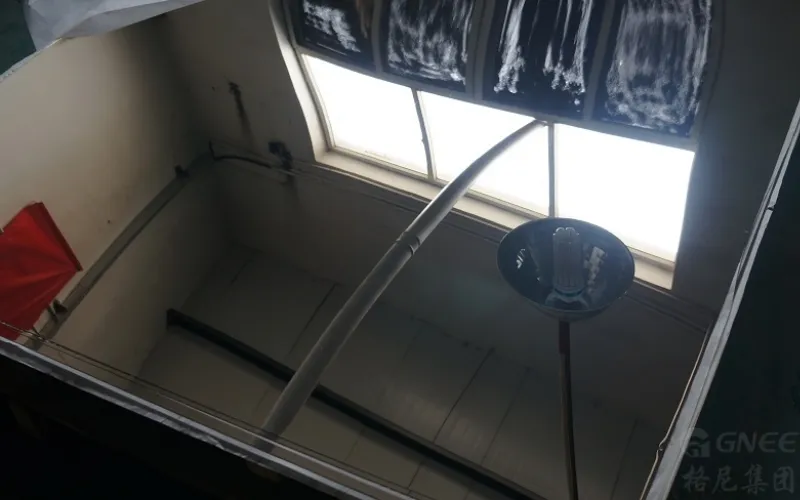
4. Patterned Finish
Stainless steel sheets and plates can be patterned (either rolling or embossing) through mechanical equipment to form concave and convex patterns, which is called stainless steel pattern plate.
The available patterns are various, including bamboo patterns, diamond patterns, pearl patterns, T-shaped patterns, etc. This kind of patterned stainless steel plate is bright, tough, wear-resistant, and maintenance-free. It also has a strong 3D effect.
It is mainly used in architectural decoration, elevator decoration, industrial decoration, facility decoration, and kitchenware.
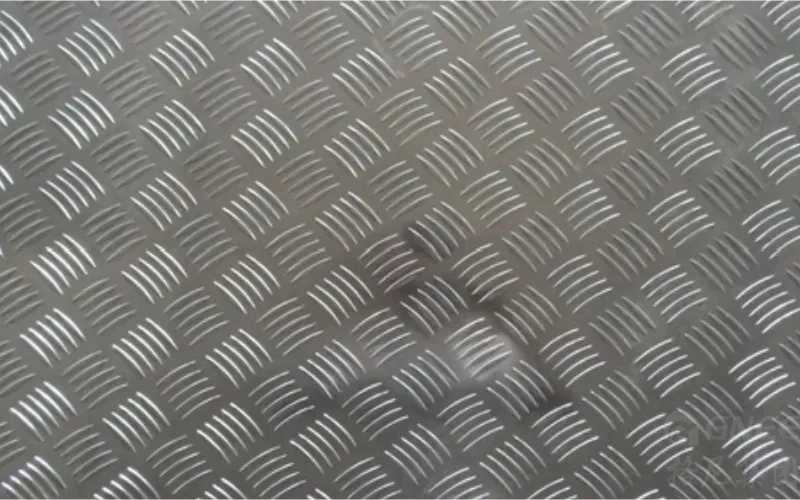
5. Colored Finish
Stainless steel plates can be colored to offer different colors, making the metal not only colorful in appearance but also effectively improving the wear resistance and corrosion resistance.
Generally, it can be colored either by the application of paint or by chemical treatments. Paint systems rely upon introducing a second layer of material onto the surface whereas chemical systems rely upon altering the thickness and nature of the passive film on the stainless steel plate. Commonly used surface coloring methods for stainless steel plates mainly include:
Chemical oxidation coloring method;
Electrochemical oxidation coloring method;
Ion deposition oxidation coloring method;
High-temperature oxidation coloring method;
Gas-phase cracking coloring method.
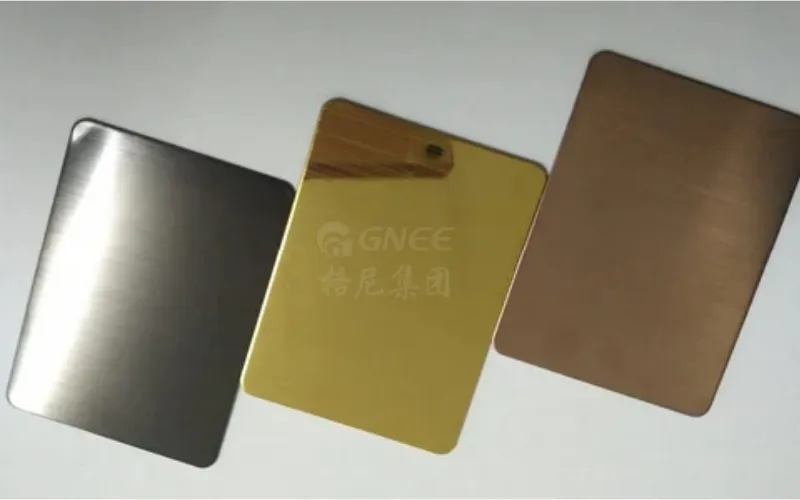
6. Etched Finish
Etched stainless steel plate showcases intricate patterns and designs achieved through the chemical process of etching. Using an 8K mirror stainless steel plate or brushed stainless steel plate as the substrate, it will be etched and further processed. Various complex processes such as partial brushed, gold inlaid, and partial titanium can be carried out to achieve alternating light and dark patterns and colors. The color can be transferred before or after coloring.
This popular fabrication technique finds broad applications in furniture, decorative endeavors, star hotels, KTV, large shopping malls, and high-end entertainment venues.
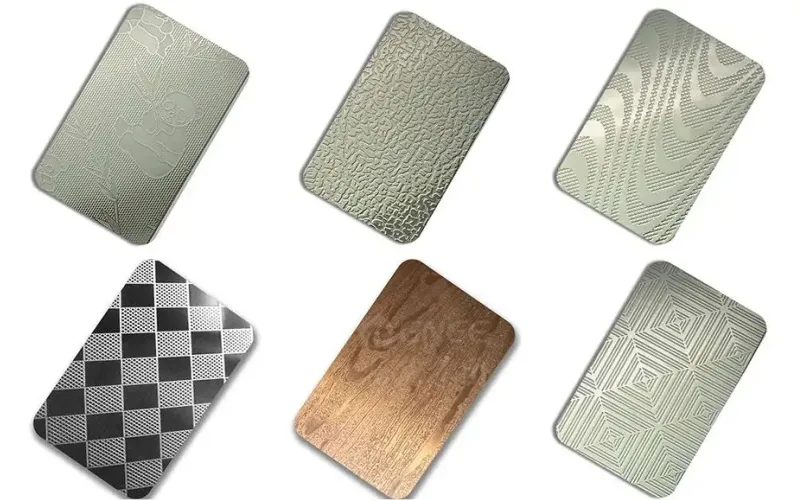
7. Sandblasting Finish
Sandblasting is one of the most common surface treatment processes for stainless steel plate processing. It uses compressed air as power to form a high-speed jet beam to spray the spray material (copper ore, quartz sand, emery, iron sand, sea sand) at high speed onto the surface of stainless steel plate to be treated, causing the shape of the outer surface to present a fine bead-like sand surface.
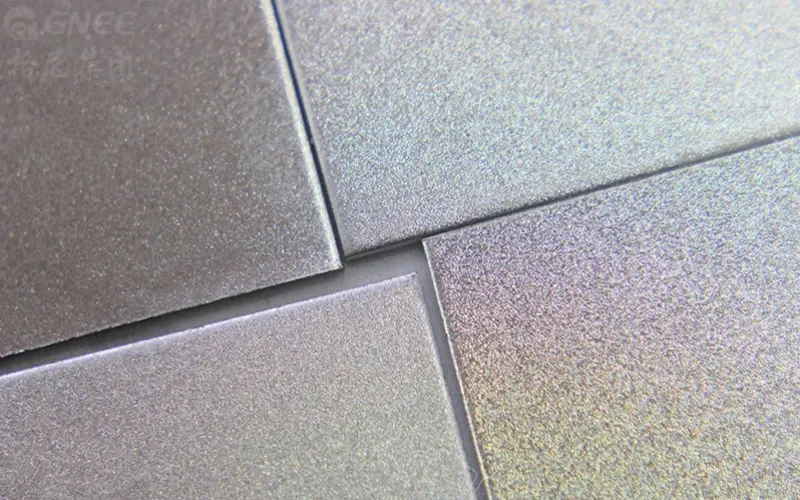
8. Custom Stainless Steel Plate Finish
For example, you may blend two or more surface finishes to achieve special aesthetic or functional properties. For custom surface finishes beyond those mentioned here, contact us to connect with a metallurgical engineer who can assist you.
Contact Gnee Steel for Your Stainless Steel Plate Finishes
So, which stainless steel plate finishes should you choose?
A good finish will improve the functionality, aesthetic value, or appearance of the stainless steel plate. Ultimately, this also affects the stainless steel plate price. Therefore, selecting the right finish for your stainless steel plate application is very important. You are probably looking for SS plates with a long lifespan, good corrosion resistance, beautiful appearance, and low maintenance needs. The right finishing is the way to guarantee that the stainless steel plate will behave as expected. If you have any questions about choosing stainless steel plate finishes, contact Gnee Steel today. Our friendly team is happy to help with any queries you may have.


